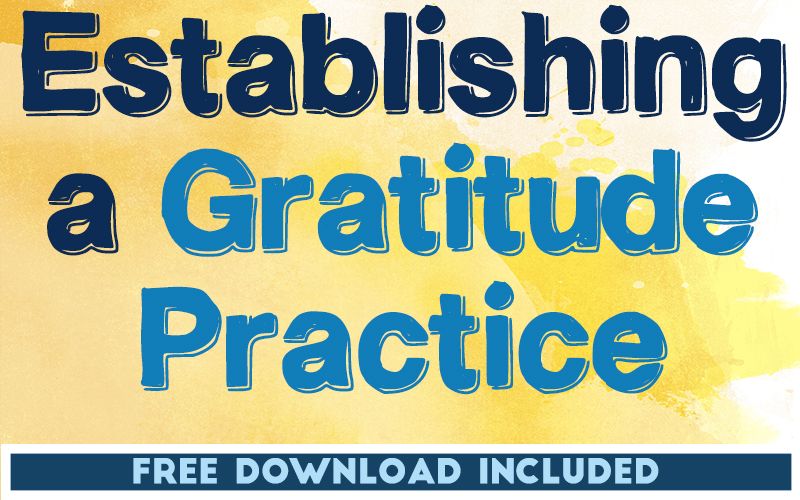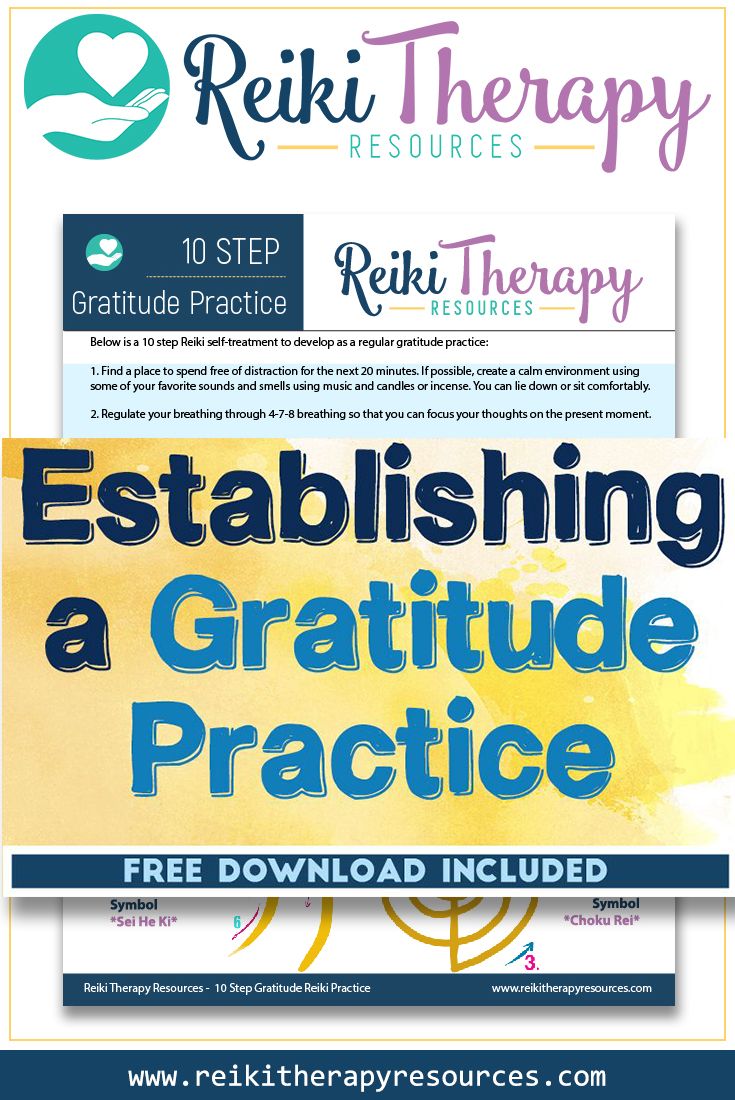
THIS POST INCLUDES:
——————————————–
1. What is a gratitude practice
2. How to establish a gratitude practice
3. Using Reiki in your gratitude practice
4. Free Download 10 Step Gratitude Practice
WHAT IS A GRATITUDE PRACTICE
A gratitude practice is simply the act of acknowledging what you are grateful for and then incorporating that acknowledgment into your life on a regular basis. Occasionally we might be presented with an event that spontaneously sparks a feeling of gratitude, however, a gratitude practice invites you to make a purposeful choice to acknowledge the things you are grateful for in your life.
In many ways having a practice of being grateful is similar to incorporating regular exercise into your life. You understand that while doing the activity spontaneously might be more satisfying and enjoyable, having a regular practice can reap many benefits over the long term.
When you initiate a regular practice of gratitude, you acknowledge all that is good in your life. This acknowledgment can prime your brain to be aware of the positive aspects of your life and in turn, this impacts how you perceive your life.
Gratitude doesn’t mean reflecting on only the positive things in your life. Gratitude can also extend to understanding the positive aspects that may have benefited from difficult moments in your life. For example, you may have gone to therapy to deal with a marriage breakdown, but in the process, you also discovered you had unexplored issues from childhood that you had not been identified before. Another example is you may have lost your job, only to find a much better one soon after.
An aspect of gratitude can be found in almost every experience. When we find an obvious or subtle aspect of gratitude, it can expand our understanding of how we perceive all experiences in our life.
Being grateful doesn’t have to mean only acknowledging significant positives in our life. Gratitude can also focus on the smaller things in life like someone holding a door open for you, the sun shining with a big blue sky, the smell of coffee that someone else is making for you, or an elevator door opening just at the same time you walk up to it. All of these moments remind us that appreciating the small things in life can boost our mood and perception of how good our life already is.
Noticing these small things also helps us to develop an ability to notice other helpful or positive things that occur in our life even when we experience adversity. This ability can help develop resilience when we need it in more difficult times in our life.
BENEFITS OF A GRATITUDE PRACTICE:
- Improved mental health
- Improved relationships
- Expanded understanding of behaviors
- Increased personal insight
- Developing empathy
- Positive mindset
- Developing resilience
- Developing optimism
- Developing positive feelings towards others
- Emotional regulation
- Stress relief
- Develops deep connections
- Enhance self-belief and self-esteem
- Disconnects us from destructive emotions
- Distracts us from overthinking
HOW TO ESTABLISH A GRATITUDE PRACTICE
Your gratitude practice can be created based on what is interesting to you as a person. Your gratitude practice should be practical, not too demanding, and remain an act of purpose and consideration.
If your gratitude practice becomes rushed, contrived, and repetitive, then you will begin to lose the benefits of mindfully acknowledging what you’re grateful for in your life.
A gratitude practice should remain an act that provides you with benefits. If you begin to resist, avoid, or resent your gratitude practice, then it’s time to stop and acknowledge what you’re feeling. It may be that you’re feeling pressure to stay positive even when you’re feeling down or feeling angry or resentful about parts of your life.
When difficult emotions arise, you can use your gratitude practice to help boost your mind, however, it’s also important to acknowledge and understand the emotions that you are feeling.
You may decide a break from your gratitude practice will help while you focus on other aspects of your mental health. You can also resume your gratitude practice again in the future.
Your gratitude practice may be less routine than others and that is ok. As humans, we enjoy spontaneity and surprise as much as we like routine, so incorporating a gratitude practice at intervals can also provide significant benefits.
Some ways you may wish to develop a gratitude practice include:
- Daily meditation focusing on gratitude
- Making a daily list of 1 or more things you feel grateful for
- Journaling about a specific area in your life to be grateful for
- Use journal prompts to spark your appreciation
- Mentally identifying things throughout your day that you feel grateful for
- Establishing a gratitude ritual (eg. before a meal, or shower, or bed time) to acknowledge things you’re grateful for
- Externally expressing gratitude through thanking people, extending kindness, or showing appreciation in some way to others
- Explore your 5 senses to gain an appreciation of our physical nature – smell, sight, touch, hearing, taste
- Gratitude jar – fill your jar with handwritten notes of things to be grateful for. On bad days you can pull from the jar for a reminder.
- Create a gratitude totem to carry around to remind you about gratitude. Eg could be a decorated pebble or handcrafted piece of jewelry.
- Develop a mantra. Eg I am grateful for things I smell, hear, taste, touch, and can see.
JOURNALING
Journaling is a common way for many people to establish a gratitude practice. The physical act of writing provides the opportunity to sit quietly and reflect on the day that has passed or the day ahead of us.
When we journal we can invoke rituals that encourage gratitude including journaling in a quiet space with a nurturing cup of tea while we listen to subtle relaxation music in the background.
Journaling is a great way of engaging in our 5 senses to help us become more aware of our surroundings.
Below are some common journaling topics you may like to write about in your journal:
- Write about a person that you’re grateful for and why.
- What skills do you have that you’re thankful to have?
- What hobbies are you grateful for?
- How did your body get you through today?
- What are you grateful about where you live?
- What is a household item you own that you’re grateful for?
- Do you have a holiday or special memory that you’re grateful for?
- Write about music that makes you thankful?
- What aspects of nature make you feel grateful?
- Is there a part of your morning routine that you feel grateful for?
- What made you laugh today?
- What is a favorite moment you can recall from the past week?
- Why do you like your favorite food so much?
- Who has inspired you recently?
- Recall a family tradition that you love.
- Do you have a favorite movie? Why is it your favorite?
- Do you have a favorite book? Why is it your favorite?
- Do you have a favorite song? Why is it your favorite?
- Can you recall something nice that somebody said to you recently?
- If you could visit a place once a month, where would it be?
- What do you love about your house?
- What do you love about your city?
- What part of your job or past job did you like?
- How is your life better today than it was at the same time, last year?
- Do you feel you have overcome a recent difficulty?
- What do you admire in your partner, family member, or best friend?
USING REIKI IN YOUR GRATITUDE PRACTICE
Developing a gratitude practice can benefit from incorporating various aspects of your life including the physical, mental, emotional, and spiritual aspects of your life.
This includes incorporating Reiki into your gratitude practice. Reiki itself incorporates gratitude into its philosophy through the 5 core principles as listed below:
- Just for today, I will not anger
- Just for today, I will not worry
- Just for today, I will be grateful
- Just for today, I will do my work honestly
- Just for today, I will be kind to all living things
Sometimes it is challenging to feel gratitude. Life can be difficult and developing a sense of gratitude while you are feeling distressed can be challenging. In these times it’s useful to remember that gratitude is a practice and that practice can benefit from various tools that we use in our life. One of these important tools is Reiki.
Using Reiki can provide us with the ability to develop mindfulness so that we can focus on the things we are grateful for in our lives. A Reiki session can slow down our reactionary mind to what is going on around us and help us center ourselves so that we can develop the mindset and thoughts that benefit us.
Using Reiki to develop a gratitude practice can empower us to choose our reactions as well as provide us with the emotional and mental space to explore what is important to us and how we are grateful for those important aspects in our lives.
Below is a 10 step Reiki self-treatment to develop as a regular gratitude practice:
1. Find a place to spend free of distraction for the next 20 minutes. If possible, create a calm environment using some of your favorite sounds and smells using music and candles or incense. You can lie down or sit comfortably.
2. Regulate your breathing through 4-7-8 breathing so that you can focus your thoughts on the present moment. Breathe in for 4 seconds, hold for 7 seconds, breathe out for 8 seconds.
3. Activate the Sei He Ki (emotional) and Cho Ku Rei (power) symbols. You can activate these symbols over your heart area and the top of your forehead.
4. You can choose to focus on your breathing while you invoke the symbols, or you can visualize any negative thoughts lifting from your mind so that you are free from worry and overthinking at this moment.
5. Invoke a thought or mantra as you use Reiki to bring gratitude. Fill your heart and mind with a sense of lightness as you develop feelings of gratitude.
6. Repeat, ‘Just for today, I will be grateful’. Repeat this statement a few times and notice how your body starts to change.
7. Sit quietly while you let your breathing, mantra, and stillness start to work on your body and mind. If your mind wanders, repeat the Reiki symbols or your mantra.
8. Repeat the statement, ‘I am grateful’. As you repeat this statement, invoke the Sei He Ki (emotional) and Cho Ku Rei (power) symbols again over your heart area and top of your forehead.
9. You may want to mentally note some things you are grateful for as you sit in peace. It may be a person, a moment, or an experience in your life that you feel gratitude towards.
10. Close the session by returning to your breathing. Use the 4-7-8 breathing method so that you can focus your thoughts on the present moment.
Sei He Ki
Cho Ku Rei
FREE DOWNLOAD
SIGN UP below to receive your FREE DOWNLOAD. Once you enter your email address, you will receive access to the Free 10 Step Gratitude Reiki Practice.

BUILD YOUR REIKI REFERENCE MATERIALS:
Pin this image to your Pinterest board.

SHARE KNOWLEDGE & PASS IT ON:
If you’ve enjoyed this post, please share it on Facebook, Twitter, Pinterest. Thank you!


